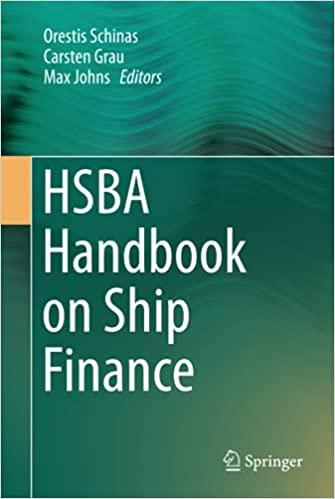Question
European Foods (EF) has decided to consider the production of a new line of healthy foods. The product being considered is a new cereal, Super
European Foods (EF) has decided to consider the production of a new line of healthy foods. The product being considered is a new cereal, Super Crisp, which contains small bits of cooked vegetables with bran flakes. Assume that you were recently hired as assistant to the director of capital budgeting, and you must evaluate the new project. The new cereal will be produced in a currently unused section of European Foods main plant. EF owns the building, which is fully depreciated. The required equipment would cost 200,000 plus an additional 40,000 for installation. In addition, inventories (raw materials, work-in-process and finished goods) would have to be increased by 25,000 at the time of the initial investment, while accounts payable would go up by 5,000. The project is expected to operate for 4 years, at which time it will be terminated. For tax purposes, the equipment and installation costs could be depreciated on a straight-line basis. The equipment is expected to have a resale value of 25,000 after 4 years of use. A consulting company was hired to do a preliminary study of the potential market for this type of product. Its report indicates that EF can sell up to 50,000 units the first year of the project, 75,000 the second year, 120,000 the third year and 150,000 the fourth year, after which the project will be terminated. The expected sales price is 2.00 per can. Cash operating costs for the project (total operating costs less depreciation) are expected to total 60 percent of euro sales. The consulting company billed EF 30,000 for the study 6 months ago and was paid a month later. To cover EFs overhead costs, the accounting department charges new projects a standard fee equal to 1% of the projects sales revenues. European Foods is subject to a 40 percent tax rate on both profits and capital gains. The cost of capital that EF uses for projects similar to the new cereal project is 10 percent. You have been asked to evaluate the project and to make a recommendation as to whether it should be accepted or rejected.
(a) EF uses debt in its capital structure, so some of the money uses to finance the project will be debt. Given this fact, should the projected cash flows be revised to show projected interest charges? Explain.
Step by Step Solution
There are 3 Steps involved in it
Step: 1

Get Instant Access to Expert-Tailored Solutions
See step-by-step solutions with expert insights and AI powered tools for academic success
Step: 2

Step: 3

Ace Your Homework with AI
Get the answers you need in no time with our AI-driven, step-by-step assistance
Get Started


